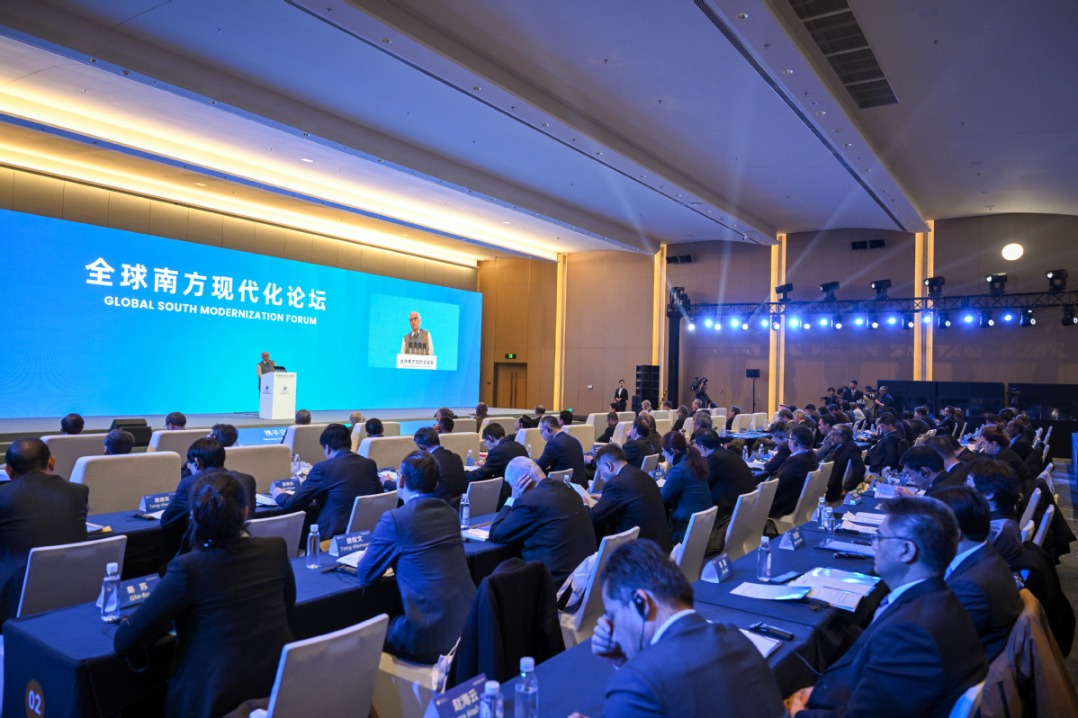History offers lessons on ways to win friends

Three years ago, at the invitation of Indonesia's consul general to Guangzhou, I gave a talk on "China's Economy in 2050" at the Ritz-Carlton Guangzhou, which was attended among others by 44 consuls general. I framed the talk drawing from three major trends of China over the past three decades, and focused on three areas-growing regional and international trade; emphasis on education, including the revival of classics; and the proliferation of communications technology exemplified by enterprises such as Alibaba and Tencent.
Trade, classics and the press (Gutenberg), the parallels between today's China and 15th century Europe are too prominent to miss. As China is experiencing its own renaissance, I was optimistic about China's economy in 2050.
What I did not expect was the dynamic interactions following the speech. Some questioned the possibility of China undergoing "reformation" following a Chinese "renaissance", while others were convinced that China's economic rise has benefited the region.
One consul general said that I had missed out the critical factor that helped spread Renaissance from Florence to Venice and beyond: the Black Death of 1347-51 which affected Europe and Asia, including China. Whatever the place of origin of the plague which claimed millions of lives, the traveling merchants, bankers and militia groups along the ancient Silk Road were the catalysts. The consul general's conclusion was that the fates of Europe and China were bound together for better or for worse, and it was always business that stood in between these crossroads.
What acerbic wisdom?
Against this backdrop and the daily feeds of current geopolitical reads, the question on how to approach China through trade and diplomacy is worth reflecting. Conversely, China needs to win friends from Asia to Europe, especially in critical times like these. Reversing the order of 2016-17, based on the figures from January to July this year, ASEAN is the number one trading partner of China followed by the European Union and the United States.
Also, for the first two quarters of this year, China was the biggest export market for Germany. Even Temasek has made China its top investment venue, with underlying exposures of 8.7 billion Singapore dollars ($65.28 billion), which account for nearly one-third of the fund's global investment portfolio.
As for Beijing, it is on the move to win new friends and consolidate old friendships. On Aug 24, in a videoconference with leaders of Cambodia, Laos, Myanmar, Thailand and Vietnam, Premier Li Keqiang promised to accord priority to providing COVID-19 vaccines. The same day, State Councilor and Foreign Minister Wang Yi embarked on a weeklong visit to Italy, the Netherlands, Norway, France and Germany to promote global trade, technology cooperation, and multilateralism. Earlier, on Aug 18, Yang Jiechi, China's top diplomat, visited Singapore, followed by trips to Spain and Greece in early September.
It appears China is taking a page out of the diplomatic playbook of the Ming Dynasty (1368-1644).
Emperor Yongle commissioned seven sea voyages between 1405 and 1433 through Malacca, India, the Strait of Hormuz and the Malindi Bay near Mombasa, Kenya. Led by Zheng He, a Chinese Muslim, the Chinese fleet in 1405 had 317 vessels carrying 70 eunuchs, 180 medical personnel, five astrologers, 300 soldiers and 26,800 other personnel. Through these voyages, China conducted trade with 30 countries, bringing back visitors, gifts and what John King Fairbank called "scientific curiosities" such as giraffes. Unlike Vasco da Gama's objectives of gold, glory and the Gospel, Zheng He's purpose was primarily commercial and to ensure national security.
On the other hand, there is the story of the Jesuits who traveled to China during the late 16th century, especially that of Matteo Ricci (1552-1610), an Italian priest who spent 28 years in China. Ricci lived in Zhaoqing, Guangzhou, Nanchang, Nanjing and Beijing, making friends with people from all sections of society including high-ranking officials. With the help of three such officials-Xu Guangqi, Yang Tingyun and Li Zhizao-Ricci and some other Jesuits translated Confucian works such as The Great Learning and "exported" them to Europe.
The collaboration and knowledge transmission between Ricci and Xu helped China to grow potatoes in Shanghai and Tianjin, control floods and eradicate locusts in many places, shape its worldview, and correct its calendar.
In fact, the ties between China and Europe were so strong that the Jesuits survived the transition from the Ming Dynasty to the Qing Dynasty (1644-1911) and flourished in the country till about 1724. The friendship between China and Europe resulted in knowledge transfer, technology sharing, enriching cultural ties, and regional stability.
How to win friends and influence people? This could be on top of the agenda for today's diplomatic and business worlds, from Beijing to Bangkok to Brussels. But, unfortunately, there is a sense of declining neighborliness. China's good Samaritan gestures of supplying medicines, medical equipment and face masks to other countries have been labeled "face-mask diplomacy", which hints at Beijing's "increasingly controlling" attitude.
But while China needs a better way to tell its story, other countries should also seize the chance to develop friendship and trade ties with China.
The author is the general manager of a foreign bank in Guangzhou. The views don't necessarily represent those of China Daily.
Today's Top News
- China sends letter to UN over Japanese PM's remarks on Taiwan
- Chinese, Uzbek FMs hold second strategic dialogue
- G20 an opportunity to strengthen Sino-EU ties
- China, Africa foster shared food security
- Japan urged to take practical steps to honor its commitments to China
- Direct dialogue on climate change stressed






























